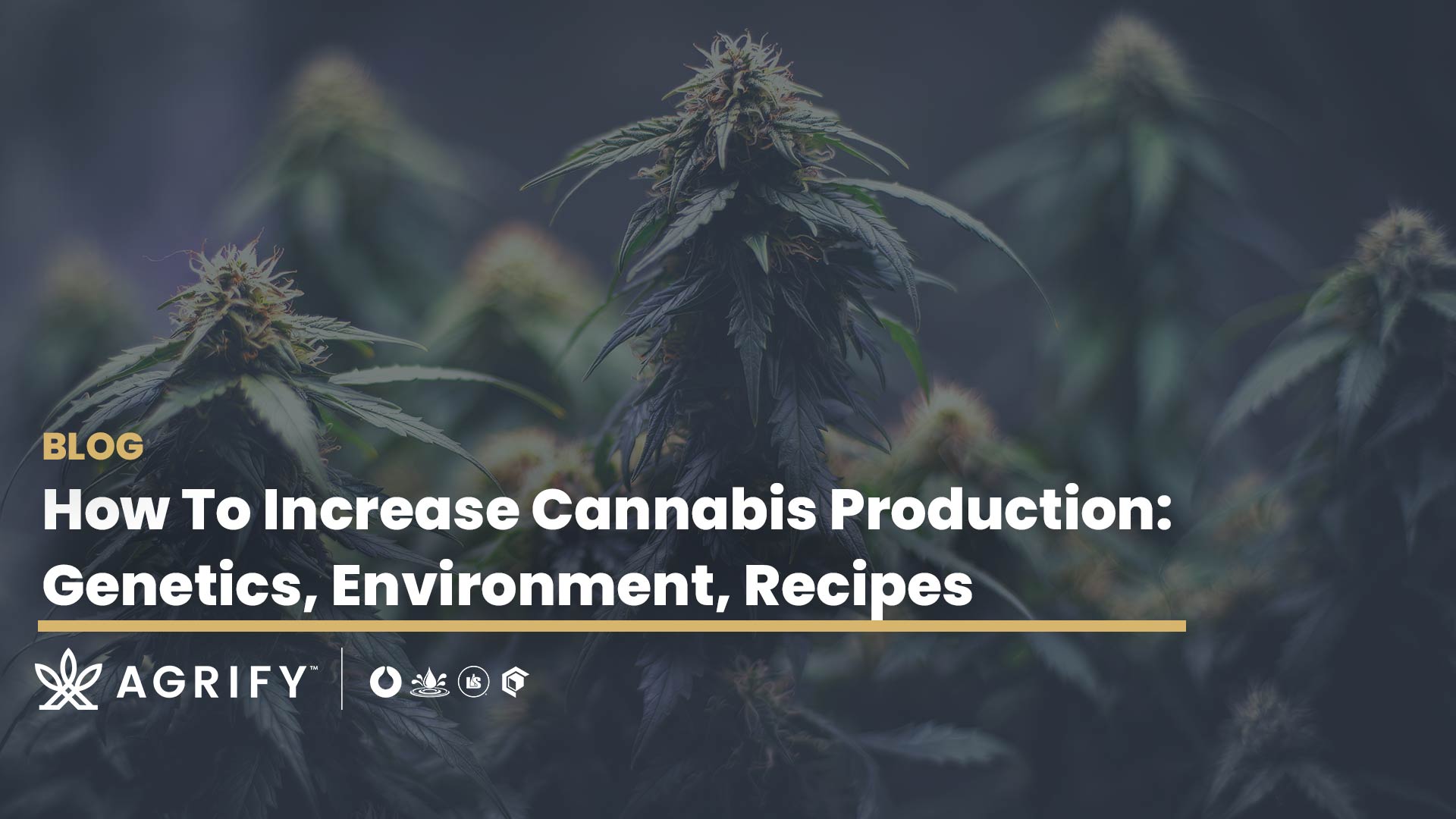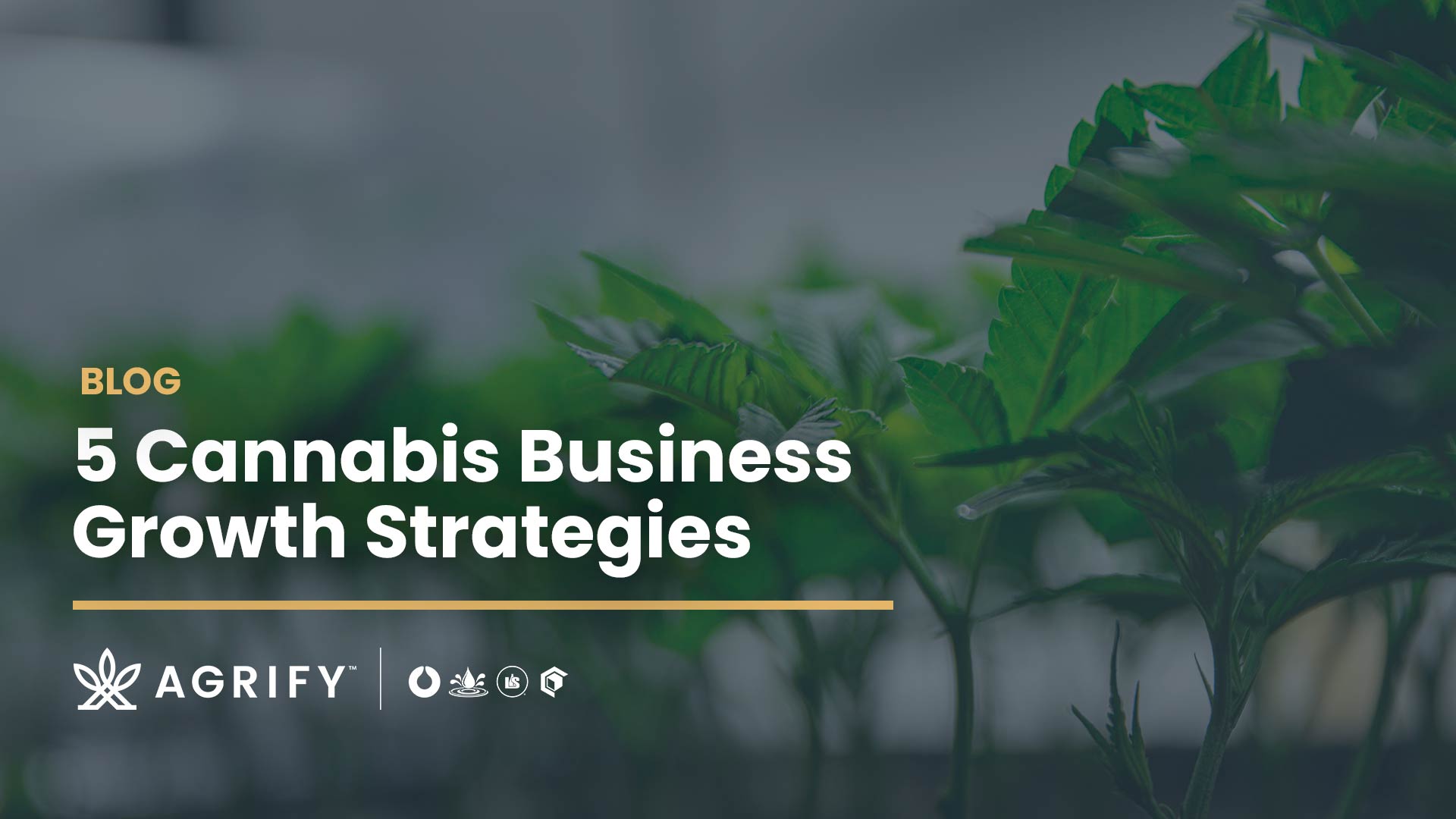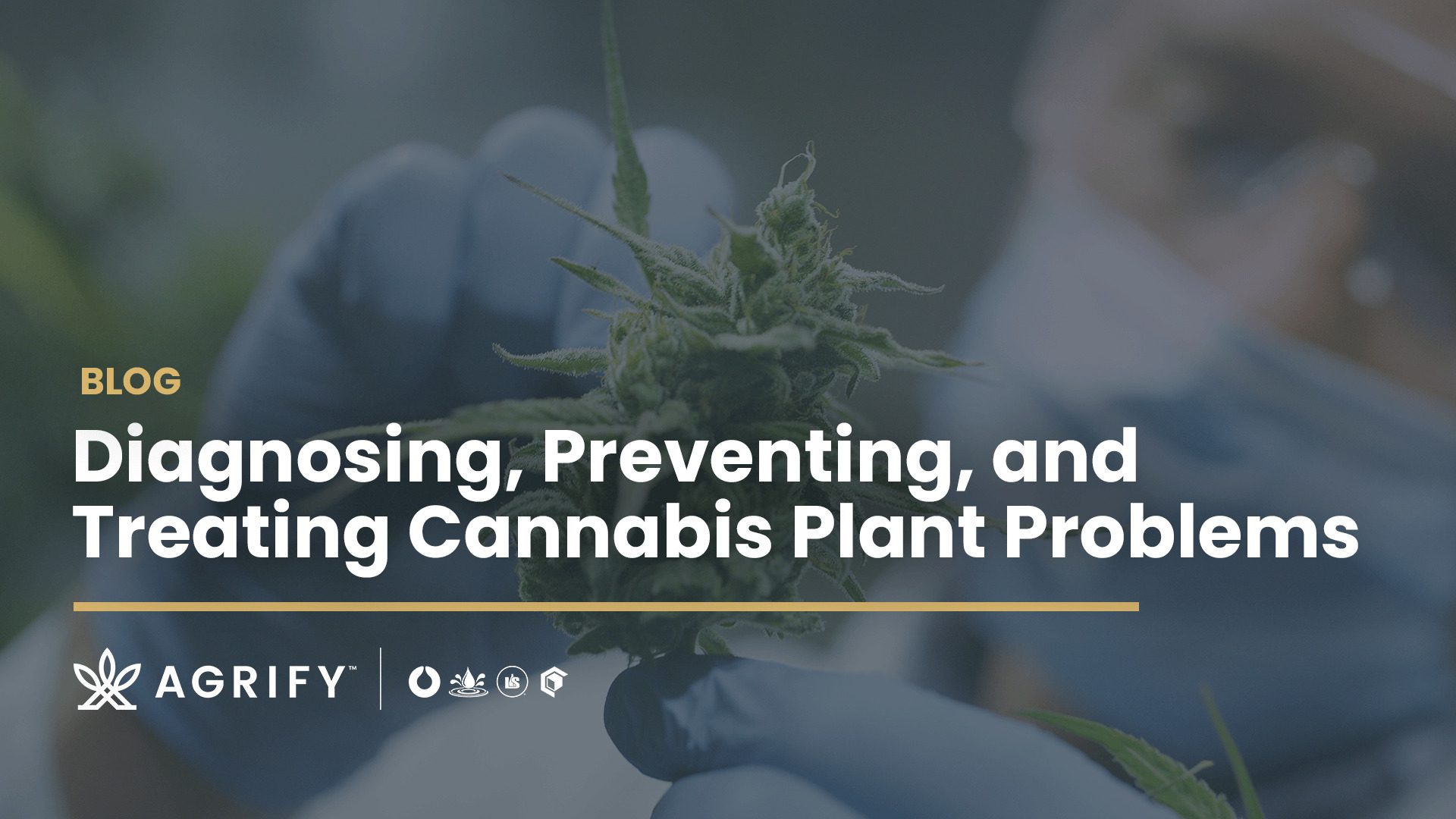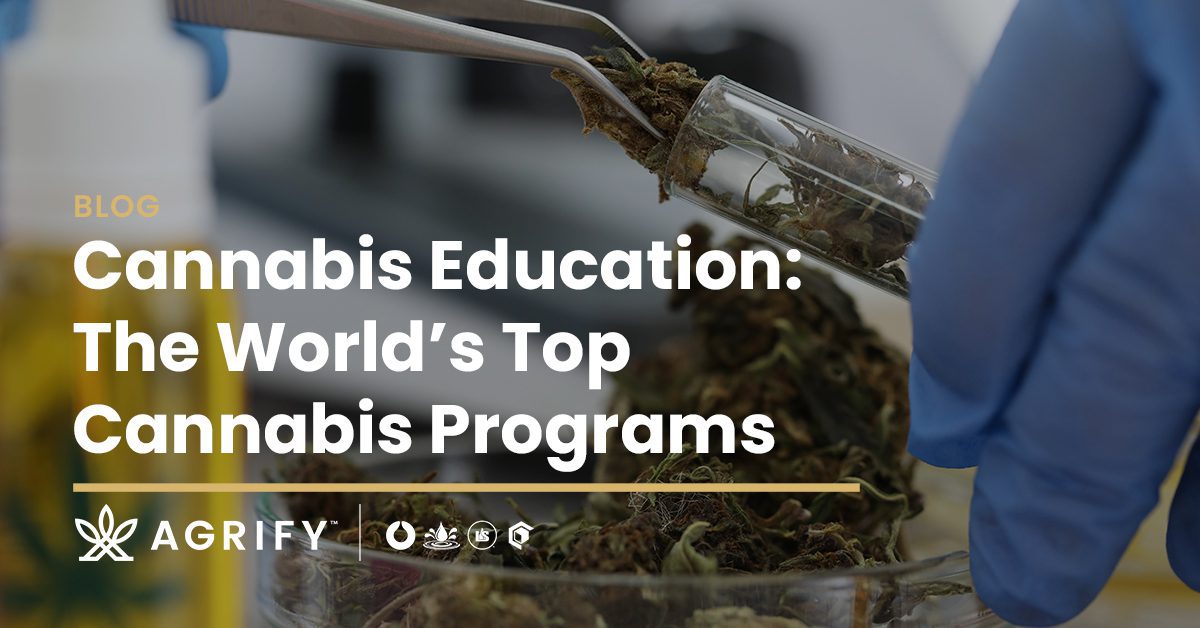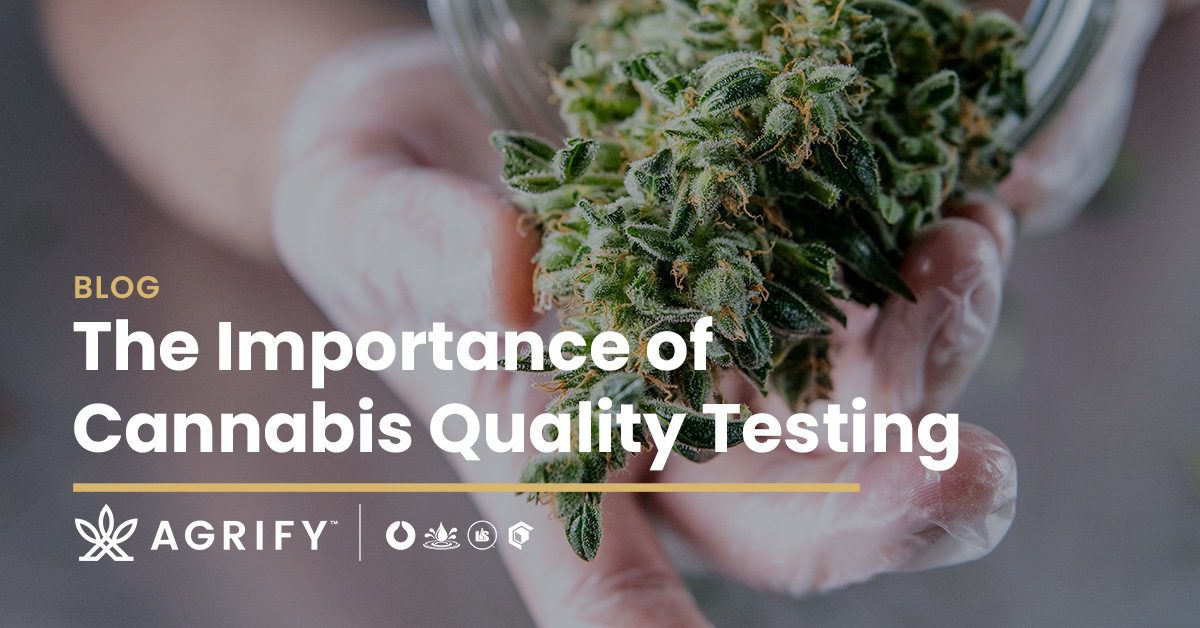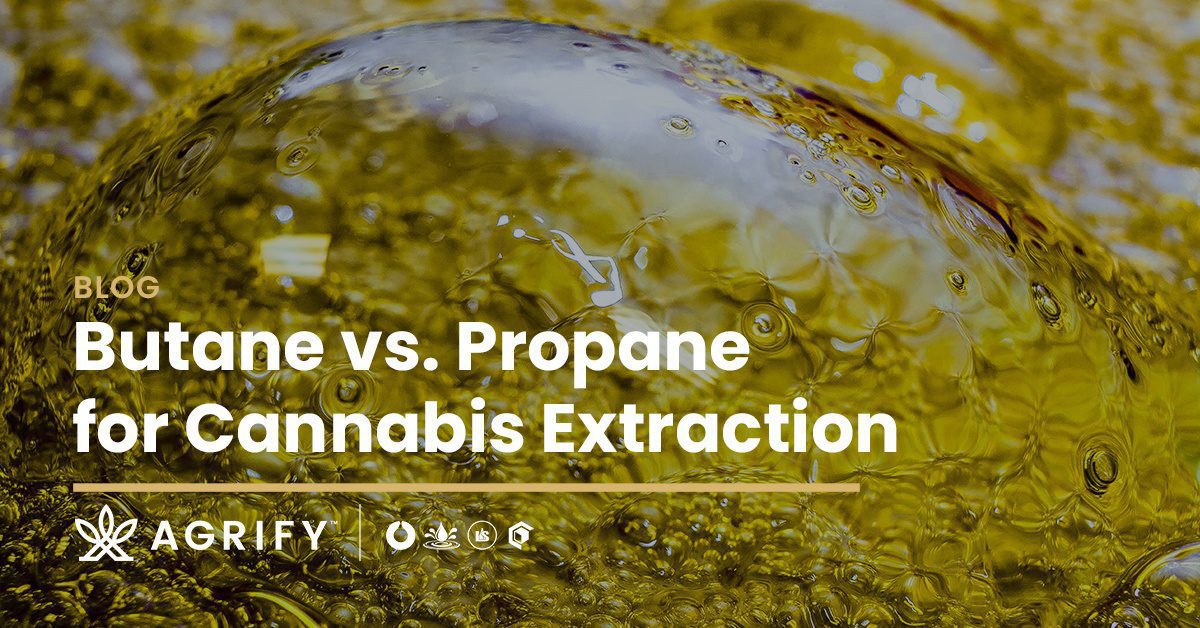Greenhouse or Indoor Cannabis Cultivation: What’s the Difference?
Both greenhouse and indoor cultivation promise growers the same thing: a controlled growing environment. Unlike growing in the great outdoors, greenhouse and indoor cannabis cultivators need to worry less about climate change, inclement weather, and/or short summer seasons.
Growing cannabis inside mitigates all these unpredictable fluctuations to offer more consistency, fewer risks, and, therefore, greater profitability. But, when it comes down to deciding between greenhouse vs. indoor production, is one better than the other?
The Promise of a Controlled Environment
No matter what facility setup you ultimately settle on — greenhouse vs. indoor — both models fall under the umbrella of controlled environmental agriculture (CEA).
CEA covers a number of different techniques and equipment, but all are defined by their ability to control the environment within a fabricated structure. For example, a greenhouse or a large commercial warehouse.

Greenhouse Cannabis Cultivation
The use of greenhouses is widespread in the cannabis industry. According to a 2020 report by the Cannabis Business Times, 41 percent of growers in the US used a greenhouse for all or part of their production.
The basic model of greenhouse cannabis cultivation requires a transparent plaster or glass structure with a single layer of plants inside, all of which are exposed to natural sunlight.
Supplemental lighting and light deprivation (light dep) techniques are both common as they help growers better control the photoperiod. Temperature and humidity are controlled through different mechanisms (HVAC or manual venting), and many facilities supplement with CO2.
Commercial greenhouses are typically well sealed, improving pest management and reducing the need for pesticides or fungicides.
Greenhouse growing can extend the growing season and, in some regions, may even facilitate year-round production. But, greenhouse growers can still be impacted by weather. Weather extremes and cloud cover can both impact production or increase the demands on supplemental lighting and HVAC systems.
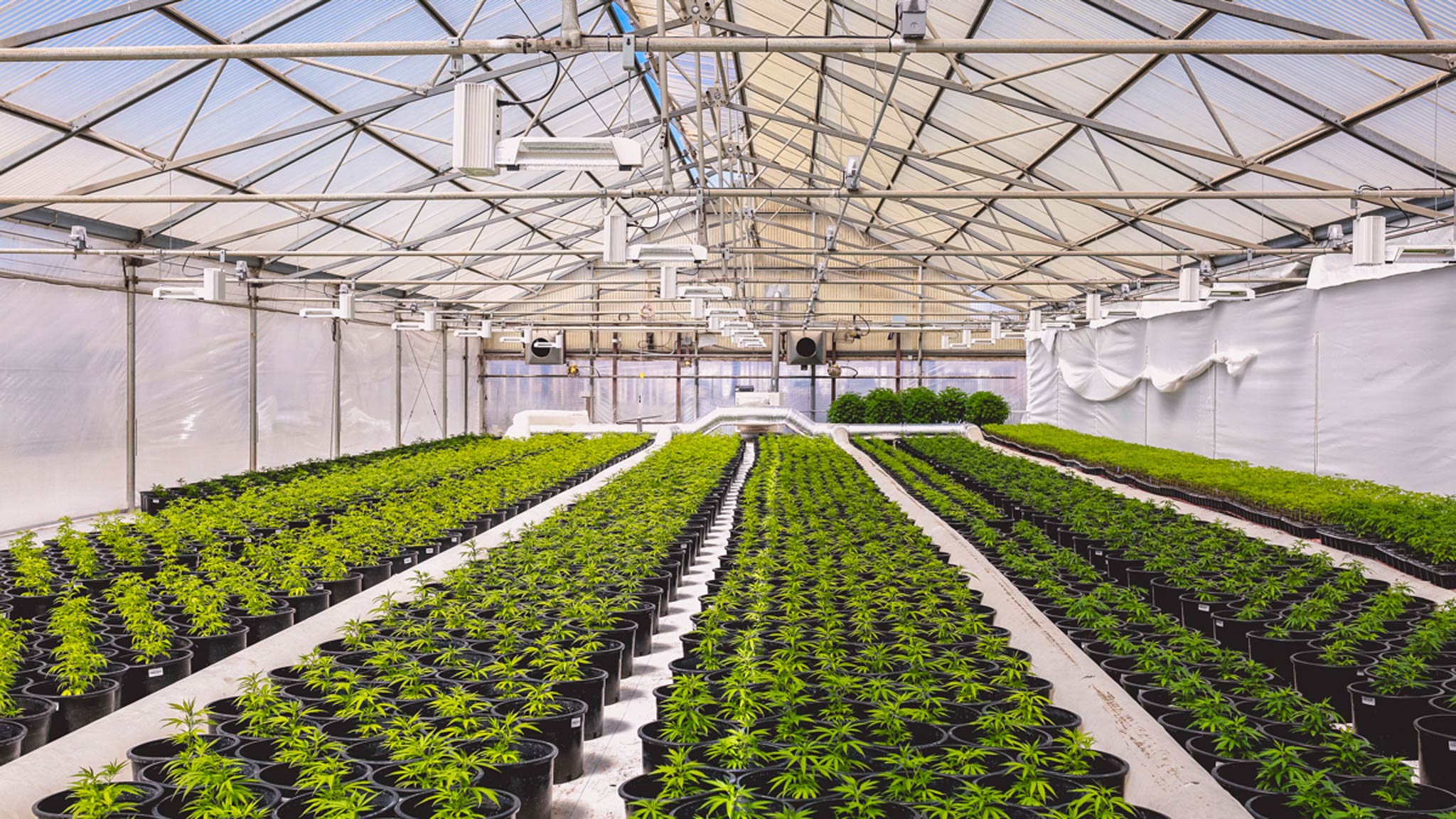
Indoor Cannabis Cultivation
Indoor cannabis cultivation takes environmental control several steps further than greenhouse production. The same Cannabis Business Times report found that 60 percent of cannabis was grown in warehouse (indoor) facilities in 2020.
Traditionally, the indoor setup was a single layer of plants under HPS (more recently LED lighting) in a retrofitted warehouse. In recent years, indoor cannabis cultivation has expanded vertically, either in a system of stacked racks, or more advanced designs like Agrify’s Vertical Farming Units (VFUs).
Indoor cannabis cultivation puts all control into the hands of the grower, including lighting, temperature, humidity, irrigation, and nutrients. This control ensures the plants are well protected from unpredictable weather conditions and problems with pests and disease. It allows for 365 days of production a year. When done well, indoor environments can create a truly consistent final product.

Greenhouse vs. Indoor Cultivation: Side-by-Side Comparisons
Is one approach better than the other? Are there differences in quality between greenhouse and indoor cultivation? What about greenhouse vs. indoor for potency? These are all considerations that matter in a highly competitive industry like cannabis.
Costs
As a greenhouse grower, you can expect your ongoing operational expenses to run $150 per sq. ft. or $233 to $256 per lb. However, with greater control over the final harvest– thanks to some environmental production– it’s possible to get $900 per lb. on average for wholesale flower. Keep in mind that this price is prone to fluctuation depending on quality and market.
Indoor growing achieves even better numbers: $400 per sq. ft. or $396 to $472 per lb. with a traditional single-layer, warehouse-style facility. Indoor also promises more predictable outcomes for even better wholesale prices: $1,500 to $2,000+ per lb (quality and market dependant).
Agrify’s cultivation solution, compromising Agrify’s VFUs and Agrify Insights, dials in the indoor environment to maximize production and make the most efficient use of inputs including water, nutrients, and energy. This means lower operational expenses at approximately $350 per lb.
In terms of upfront capital expenditures, greenhouse facilities are cheaper to build out than indoor ones. But over the long term, greenhouses typically guarantee fewer crop turns per year, lower prices per pound, and lower annual returns.
An indoor facility, particularly one employing the Agrify approach, creates perpetual returns on the upfront investment into infrastructure—as much as a 69 percent increase in total annual yield and 83 percent increase in net profit.
Curious where these statistics come from? Check out our free white paper breaking down the numbers on the economics of cultivation.
Quality
There are measurable distinctions in quality between greenhouse grown and indoor grown cannabis. For starters, differences in the average price per pound between the two methods. Greenhouse flower regularly sells for significantly less than the price of high-quality indoor flower.
Indoor growing offers better consistency from one crop cycle to the next, which, over the long term, means a more consistent flower. From the consumer perspective, consistency is almost as important as potency. Getting the same product (and experience) they had on their last purchase is essential to building brand loyalty and credibility.
Agrify has achieved near-perfect consistency, as demonstrated in two case studies. Across 10 cycles of Lemon Haze and Candy Cane, Agrify’s technology reduced total cannabinoid variation to 0.38 and 0.67 percent respectively. Improved consistency translates into better flower quality.

Potency
Hands down, potency always improves with controlled environment agriculture. Yet cannabis is a plant with an exceptional morphological variation. There can be extreme differences in cannabinoid and terpene content with the same genetics produced under different growing conditions. As one documented experiment found, cannabinoid variation ranged from 15.37 to 28.57 percent and terpene content between 0.86 to 5.32 percent.
While the industry keeps attempting to move toward a broader appreciation of minor cannabinoids, when it comes to consumer demand, THC potency still matters most.
Once again, the argument is that better control over the environment means growers can manipulate that environment to drive the outcomes they seek. Pushing plants to greater and greater levels of THC requires total control over the inputs, and a data-driven feedback loop of information about how different inputs drive different responses in the plants.
Greenhouse and indoor cultivation both yield better potency than outdoor cultivation. But indoor growing ensures all environmental inputs are not only adjustable, but trackable, too. This empowers growers, who can then apply this unprecedented data to their grow plans.

Greenhouse vs. Indoor Offer Differing Levels of Control
There will likely always be a small market for sun-grown products, but as the cannabis market evolves and MSOs aim for national dominance, consistency and repeatability will matter most. The only way to achieve this consistency is by controlling the environment.
Greenhouses are the first step up from outdoor, followed by traditional indoor, and then advanced cultivation solutions from Agrify. Each step achieves a greater level of control, more predictable outcomes, and more tools for growers to use to manipulate the environment toward specific production goals.
Agrify provides the best-in-class vertical farming solution to address the industry’s biggest challenges, from consistency to accessibility to vertical space utilization.
Find out more about the industry’s leading advanced cultivation solution. Connect with us today.
